Not all ladybirds are red & spotty! Learn about metamorphosis and the life cycle of this cool yellow & black ladybird beetle. Fun spring nature study craft for kids.
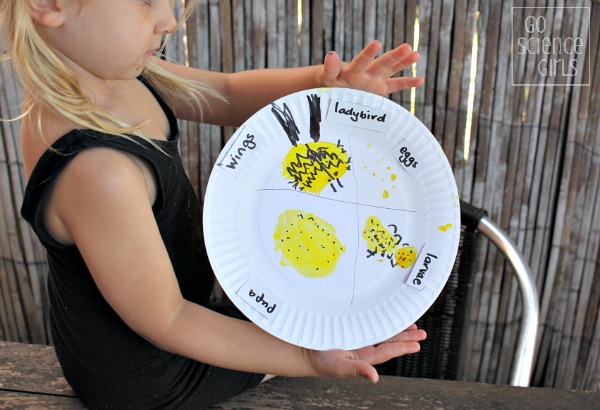
This spring we’ve been inundated with ladybirds (or ladybugs or ladybeetles as you might call them). Except that our ladybirds are not red, and they aren’t spotty!
The ladybirds in our backyard are always yellow and black, and they have a cool mask / zigzag pattern on their back instead of spots.
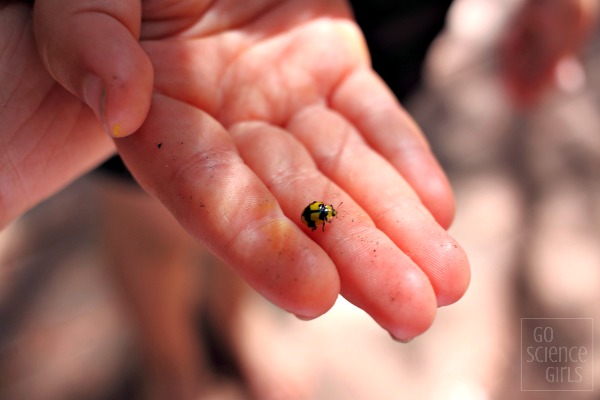
My 4 year old daughter Bumble Bee is obsessed with insects and entomology. So of course, these yellow and black ladybirds presented the perfect opportunity to learn more!
Suitable for
Try this nature study activity with preschoolers or kindergarteners. Bumble Bee had just turned 4 years old when we did this.
But first – can I tell you the most adorable thing? I just found out that a group of ladybirds is called a “loveliness of ladybirds” or a “loveliness of ladybugs”. Isn’t that so sweet! We have a loveliness of ladybirds in our backyard. 🙂
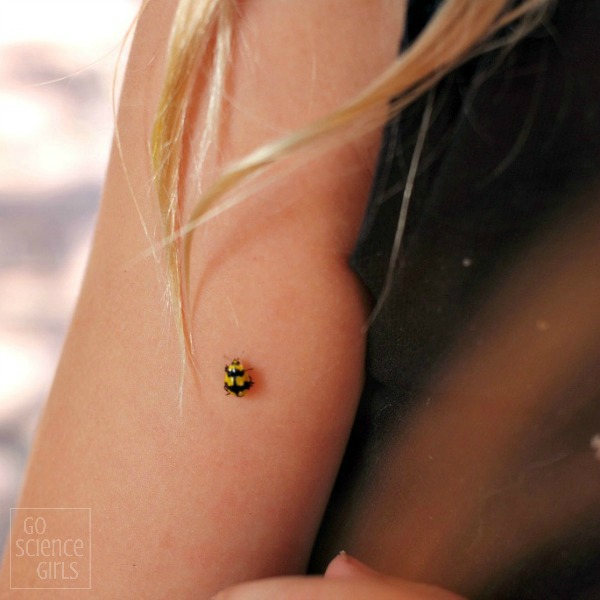
Anyway, back to our story. Turns out that the yellow and black zig-zag ladybirds in our backyard are actually called Fungus-eating Ladybirds (illeis galbula), and they feed on tiny spots of black mould that grow on the underside of leaves (and, as I discovered, on the underside of our dog kennel). And here I was thinking all ladybirds ate aphids!
This particular ladybird is actually native to New Zealand, but seems to have infiltrated much of Sydney. Sydney’s a very humid city in spring and summer, so it makes sense that black mould and fungus-eating ladybirds would both thrive here.
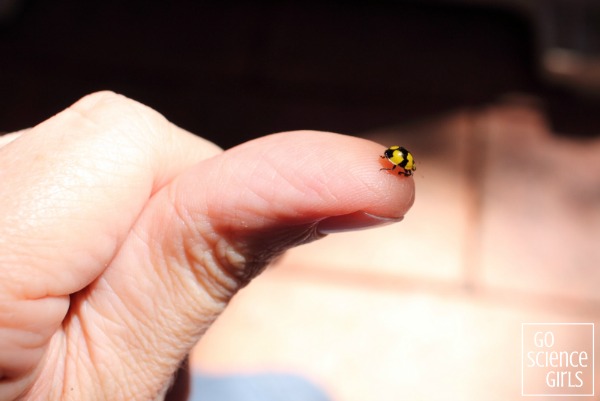
Ladybirds undergo a complete metamorphosis, just like a butterfly, changing from an egg to larva to pupa to ladybird.
We found lots of ladybird larvae all over our backyard – they’re super speedy, running around all over the place! The pupa took a little more searching as they seek a secluded place to undergo their transformation. I found many stuck to the underneath of our dog kennel, where they (normally) wouldn’t be disturbed. Once the metamorphosis process is complete, they break through the pupal casing and emerge as a beautiful yellow and black ladybird, complete with wings!
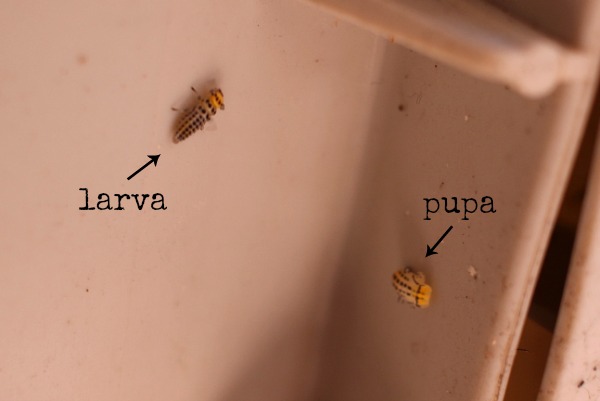

fungus-eating ladybird Life Cycle craft
Bumble Bee and I decided to create a fungus-eating ladybird life cycle craft, that tracks all the stages that this ladybird goes through, from egg to metamorphosis.
We used:
- 9″ paper plates
- yellow and white paint
- various paint brushes
- black permanent marker
- scissors and glue (optional)
We did one life cycle plate each, crafting alongside each other, as we like to do. It’s a two-way learning experience – Bee copied from me and I copy from her, as we both learn about this fascinating insect together.
We also spent a lot of time referring to the live specimens in our backyard, making sure that we were getting as many of the details as accurate as possible. Lots of nature study going on!
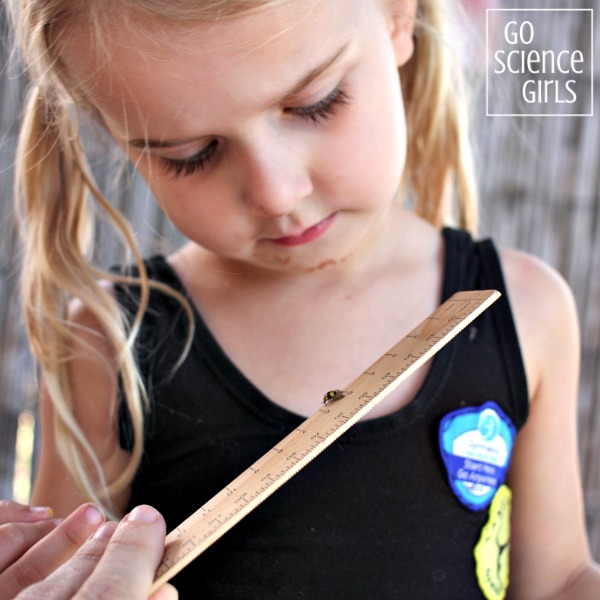
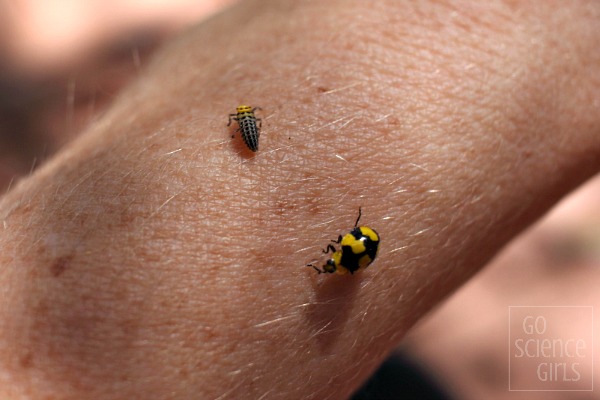
Our first step was to divide our paper plates into quarters.

We painted yellow eggs in one quarter, using the stem of a gum leaf to create tiny little dots. (We couldn’t find any actual eggs in our backyard, so we Google searched to find out what fungus-eating ladybird eggs look like.)
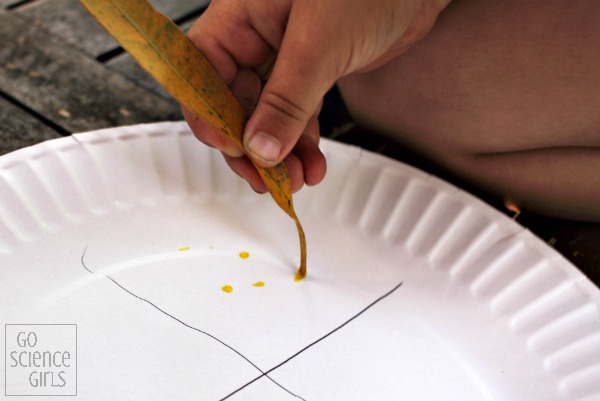
We mixed yellow and white paint to make a pale yellow, which we used to create the body of a larva and a pupa. We used a brighter yellow colour to paint the head of the larva, and the ladybird.

We waited a few minutes for it to dry (paint dries quickly in the Australian heat), then we added all the extra details using black permanent markers.
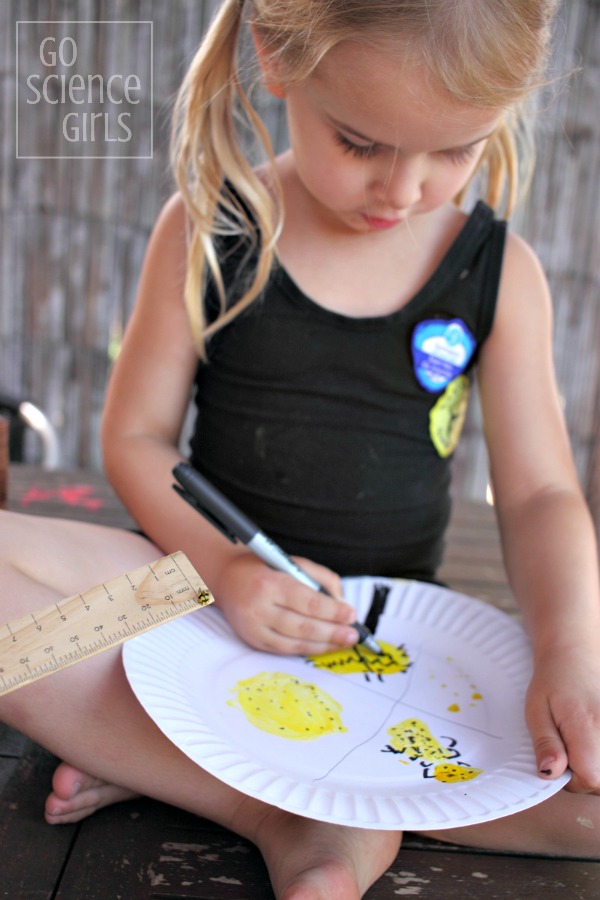
We noticed that the larvae have 6 legs (but no wings). You can’t see any legs on the pupa at all, as the ladybird is inside the pupal casing. Once the ladybirds emerge, they have 6 legs and 2 antennae. They also have wings underneath their shell. Sometimes, if you are lucky, you can find a ladybird that has just landed, and see its wings quickly before it folds them away. The wings are about double the length of the shell when they’re unfolded.
Bumble Bee decided to draw wings coming out from underneath the shell of her ladybird, so everyone would know that they were there.
I wrote labels on mine, which caused Bumble Bee a bit of angst, because she doesn’t know how to write. She didn’t want me to write on her project, as she wanted to do it all by herself. I suggested that perhaps I could write labels on another paper plate, and she could cut them out and glue them on. She was happy with that idea.
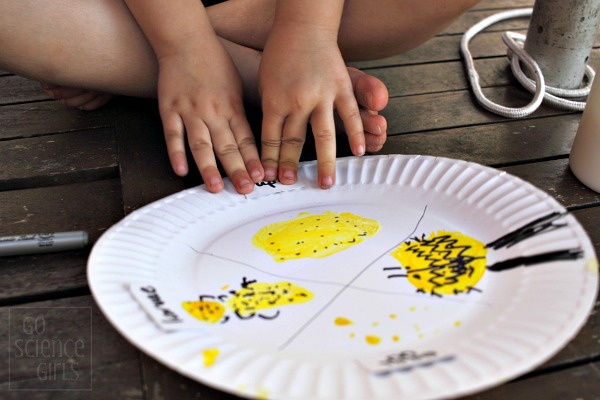
And here’s her finished project!
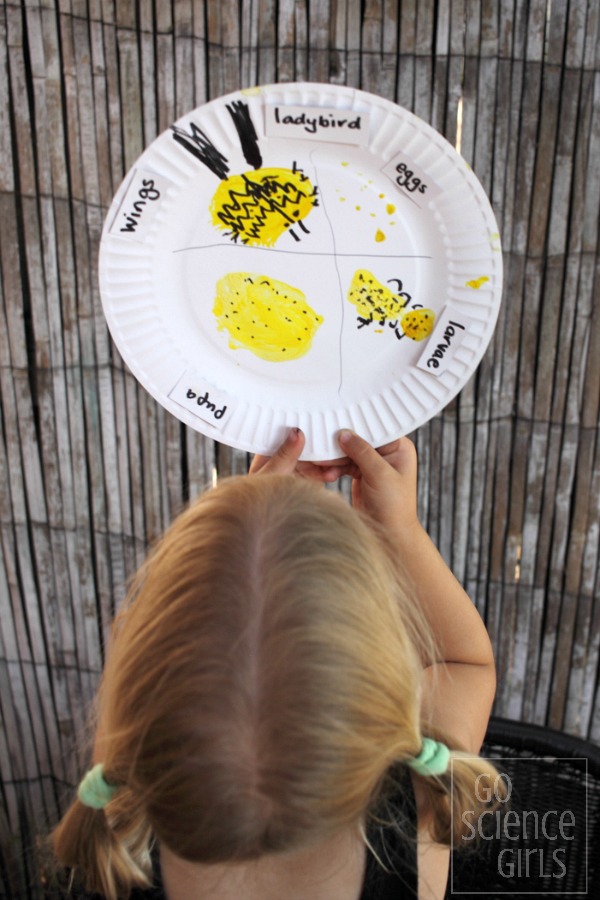
While we were crafting, a teeny little ladybird larva decided to walk on Bee’s project! I thought this would be a good chance to show you how small they are, as you can use the plate for scale.
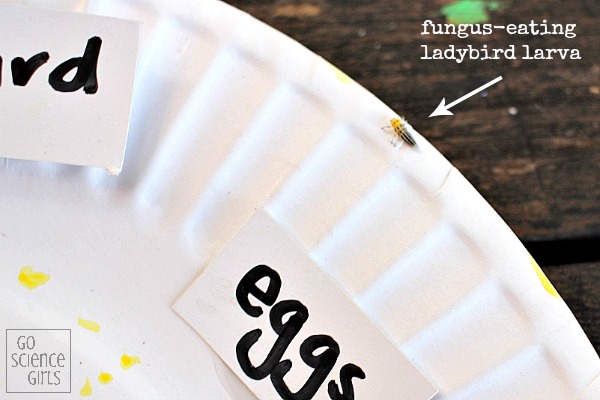
Of course, being the snap happy blogger that I am, I took hundreds of photos of ladybirds. They’re so cute! Here’s just a few of the best ones…
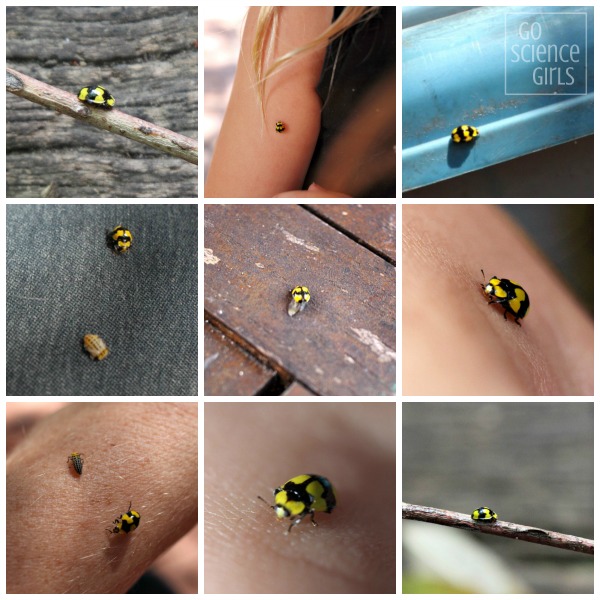
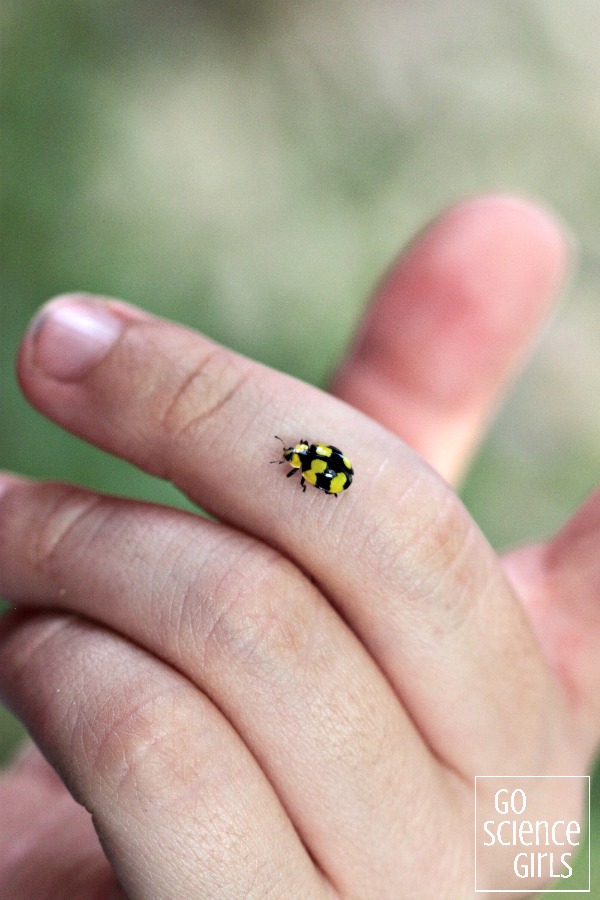
Fun Science Fact
Ladybirds are also known as ladybugs or ladybeetles. There are over 100 species of ladybirds in Australia.
Ladybirds are an insect that goes through complete metamorphosis, which means that they go through a four stage life cycle: eggs, larvae, pupa and adult ladybirds.
One species of ladybird is the fungus-eating ladybird (or its scientific name is illeis galbula). Both adults and larvae feed on mildew fungus, so fungus-eating ladybirds are very welcome in most gardens to help with this problem!
The adult fungus-eating ladybird are bright yellow with two black zigzag markings on their back. Female ladybirds lay small groups of white eggs on the underside of leaves infested with powdery mildew.
These eggs hatch into pale-yellow larvae, with rows of tiny black dots on the back. The larvae are very active, and shed their skin as they grow.
When the larvae are fully grown, they attach themselves to a sheltered place and moult into a pupa, which remains attached by one end.
Adults hatch from the pupa and mate, to start the life cycle over again.
You can find more detailed information on the fungus-eating ladybird here.
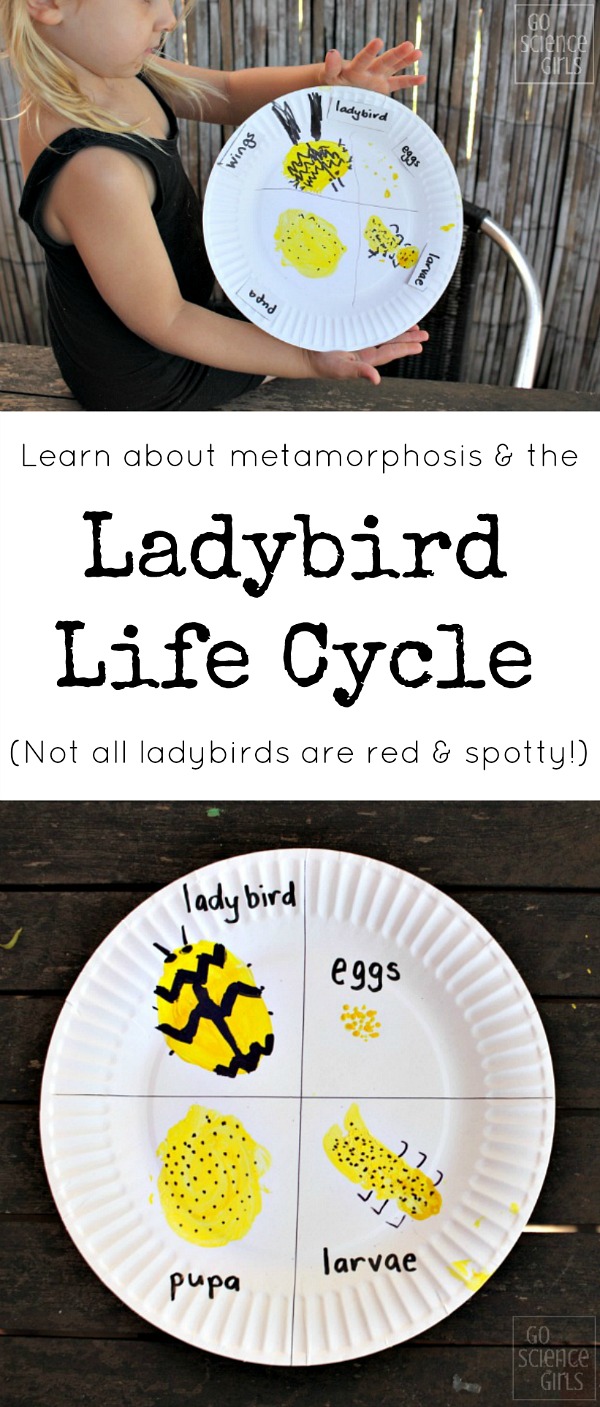
For more nature study ideas, you might like to check out our Nature Study Projects for Kids page, including:
- the classic colour changing flowers experiment, to learn about transpiration, or how plants absorb water.
- What lives in dirt? A fun sensory science experiment kids can do in their own backyard.
- make a corroboree frog from a leaf! Fun nature craft to learn about these critically endangered Aussie animals, and the conservation efforts scientists are undertaking to same them, and other amphibians around the world.
You might also like to follow our Go Science Kids and Nature Study Activities for Kids boards on Pinterest.
And, of course, you can always subscribe to our newsletter, to receive all our latest activities straight in your Inbox. We’d love to have you join us!
* This post contains affiliate link(s) to similar products used. An affiliate link means I may earn a referral fee or commission if you make a purchase through my link, without any extra cost to you. It helps to keep this little project afloat. Thank you so much for your support.

#